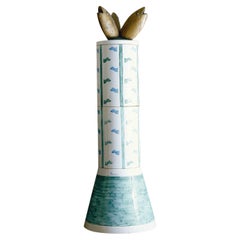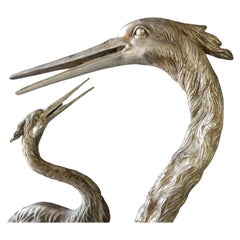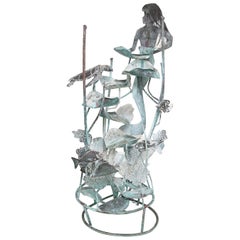Alessandro Mendini Furniture
Alessandro Mendini was born in Milan in 1931. Through his work as an architect, designer, journalist, theorist and publisher, Mendini helped establish the Italian design sensibility on a global scale with a particular focus on neo-modern, avant-garde design as well as the crossover between art, design and architecture.
Mendini’s influential work spanned the arenas of graphics, furniture, interiors, architecture, stage design, writing and painting. He graduated from the Polytechnic University of Milan in 1959, and he began his career at the studio of artist-designer Marcello Nizzoli. He went on to become the publisher of the popular magazines Casabella (1970–76), Modo and Domus (each 1979–85).
In 1979, Mendini joined Ettore Sottsass and Michele de Lucchi as a partner at Studio Alchimia, a harbinger of the Memphis Group before he cofounded Domus Academy in 1982. In 1989, he and his brother Francesco established their architectural practice, Atelier Mendini, in Milan, where he worked until his death in February 2019. In recognition of his outstanding body of work, Mendini was awarded the Compasso d’Oro twice, in 1979 and 1981. He was also honored by the Architectural League of New York, made Chevalier des Arts et Lettres in France, and, in 2014, he was awarded the European Prize for Architecture.
Mendini’s work is included in the permanent collections of the Metropolitan Museum and the Museum of Modern Art in New York and the Centre Pompidou in Paris, among others.
Find vintage Alessandro Mendini chairs, vases, table lamps and other furniture and decorative objects on 1stDibs.
(Biography provided by STUDIO CADMIUM)
1980s Italian Post-Modern Vintage Alessandro Mendini Furniture
Bronze
Mid-20th Century Art Deco Alessandro Mendini Furniture
Bronze
1990s North American Alessandro Mendini Furniture
Copper
1870s American American Empire Antique Alessandro Mendini Furniture
Bronze, Copper
19th Century German Louis XV Antique Alessandro Mendini Furniture
Ormolu
1970s American Mid-Century Modern Vintage Alessandro Mendini Furniture
Copper
21st Century and Contemporary Modern Alessandro Mendini Furniture
Cement
Early 1900s French Antique Alessandro Mendini Furniture
Stone
1980s American Vintage Alessandro Mendini Furniture
Stone
Early 1900s English Baroque Revival Antique Alessandro Mendini Furniture
Marble
20th Century Italian Renaissance Alessandro Mendini Furniture
Carrara Marble, Bronze
16th Century Italian Renaissance Antique Alessandro Mendini Furniture
Carrara Marble
Early 1600s Italian Antique Alessandro Mendini Furniture
Marble


